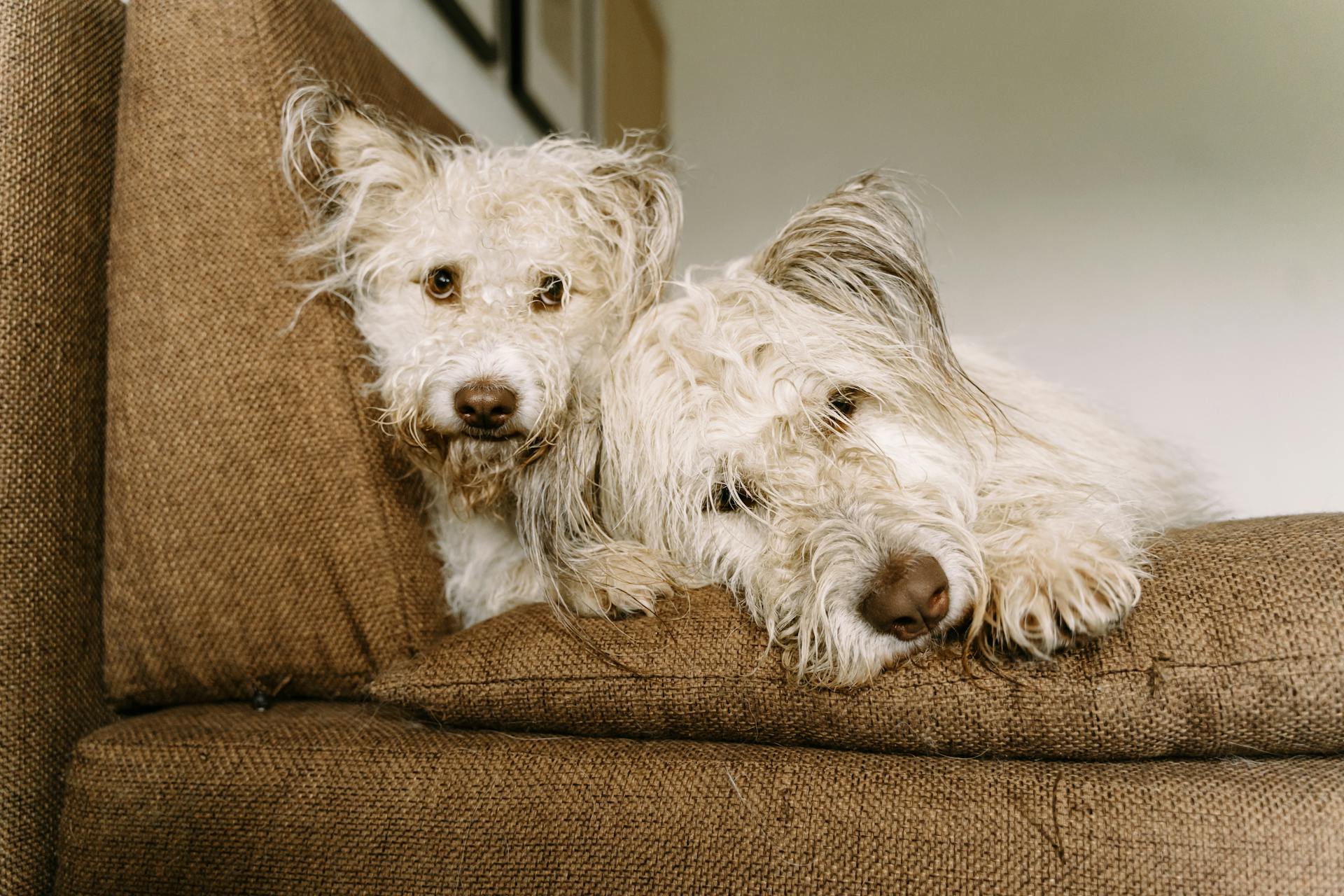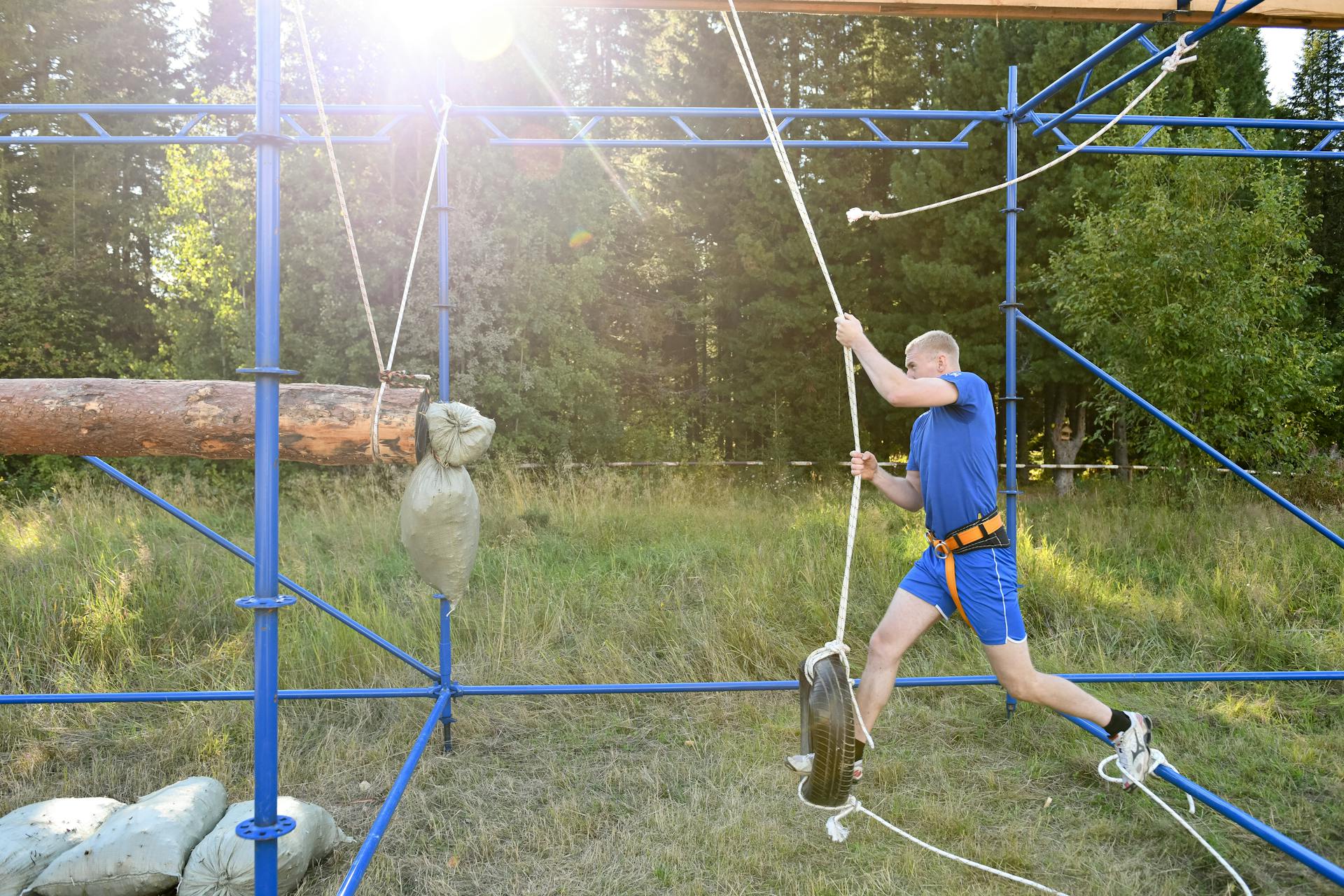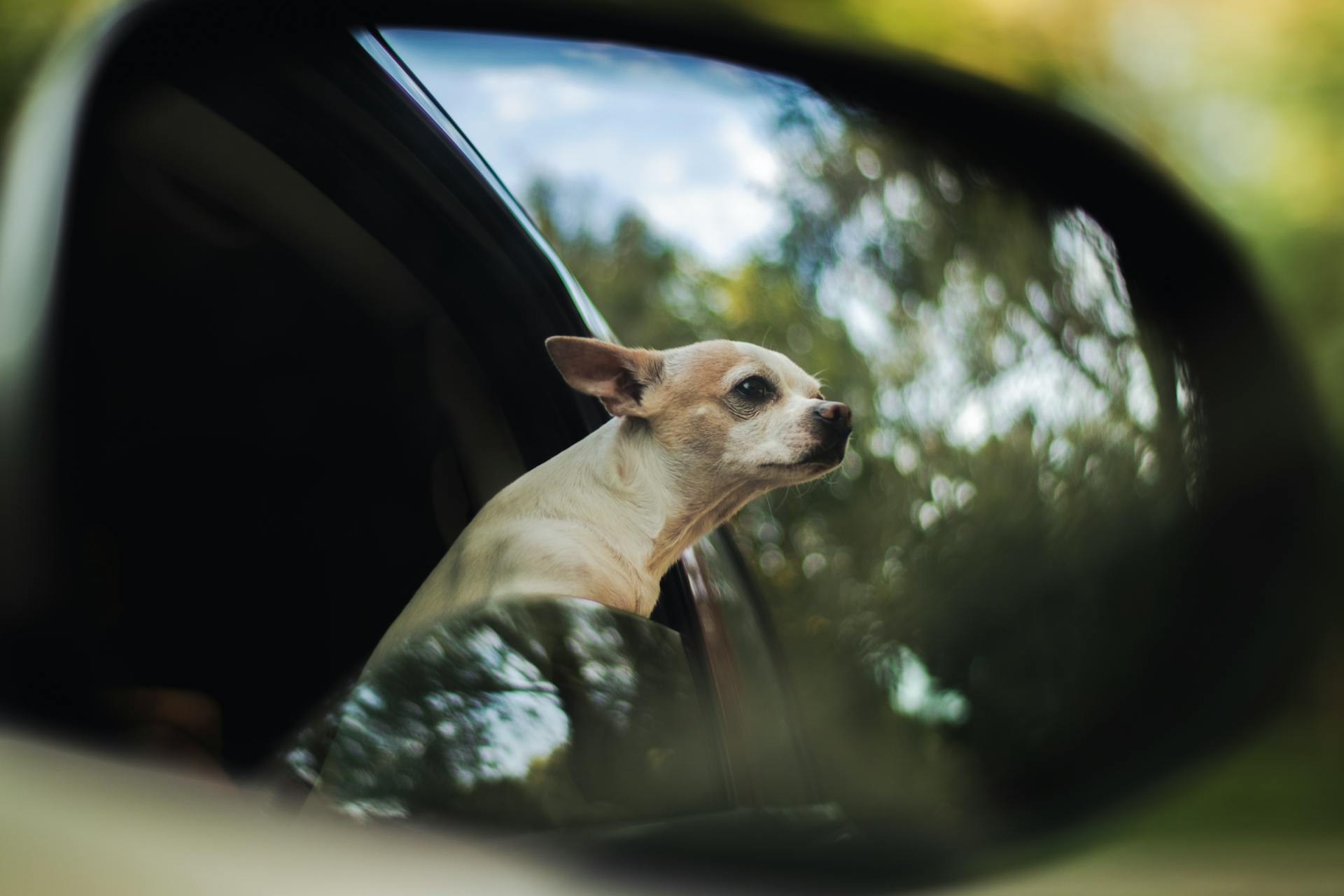
A rescue dog with separation anxiety can be a challenge to crate train, but with a little patience and understanding, success is possible. Crate training is beneficial for both you and your pet, as it teaches the dog where they can go when they need some time to relax or need a safe space away from the hustle and bustle of family life. Plus, it keeps them safe while you’re away from home.
Start off by getting your rescue dog used to the crate before trying to close them in it. Place the crate in an area of the house where your pup often hangs out, so they will become familiar with its presence. Make sure you stock it with plenty of comfortable bedding, a few favourite toys or chews and perhaps even some treats. You want to make it as inviting as possible for your rescue pup. Once they are comfortable entering their new den, gradually build up how long they stay inside by rewarding them with praise or treats when they settle for short periods of time within their structure.
Once your pup is successfully managing short bursts in the crate start raising their threshold for how much time were comfortable staying inside for by opening and closing the door gently after increasing lengths of stay each time-alway making sure that you don’t shut them in until they’ve remained content inside for at least 5 minutes. Ensure that all exits from the room and any doors leading to other rooms are closed off beforehand so that if they do become frightened during this process, there is no chance that they could escape which may increase their anxiety levels further. During this stage be patient; allow them time to deescalate and only move onto closing the crate door once your pup is relaxed within their structure-even if this takes repeated attempts over days, weeks or even months!
Finally, once you have success reaching this point start introducing longer stays outside of being able leave home without being greeted by destructive behaviours; start off a small increments again (30 minutes) building up incrementally over time until there are no signs of distress when leaving or returning home. Again always use positive reinforcement-rewarding positive behaviour can remind our dogs that being relaxed quickly within their den on their own has better results than stressing out about being left alone! With patience, understanding & consistency eventually you'll find success in crate training your rescue dog with separation anxiety!
What is the best way to curb a rescue dog's separation anxiety?
Separation anxiety can be a major hurdle when it comes to adopting a scared or abused rescue dog. The most important thing to remember is that the dog must develop trust in you before many other methods are effective. During the early stages of adoption, make sure you spend plenty of time playing, cuddling and going on walks together. This will help create a relationship that your pet can trust and rely on.
Once the rescue feels settled within their new environment, there are several additional techniques which can be employed to help relax them during times of stress. One such technique is desensitization training: gradually exposing the dog to periods of alone time for short durations with treats or toys as rewards for good behavior. Eventually, this should help your pup realize that being alone won't always result in an immediate reunion with you.
You may also want to consider teaching simple commands such as “sit”, “stay”, and “being alone” so your rescue will learn when it is time for them to be by themselves without feeling panicked or afraid. Exercise can be extremely beneficial in curbing anxiety as well; allowing your pup to run around and explore through interactive play or structured walks can lift their spirits while also improving focus.
Finally, it is important to remain patient but consistent when dealing with long-time Separation Anxiety issues in rescue dogs; they often require more work than other animals that have been in secure environments since birth. Providing reassurance, sticking to routine and setting up a safe area where your pup can feel comfortable all greatly improve the success rate of overcoming this type of anxiety in rescued pets.
How can I modify a rescue dog's behavior to reduce anxiety?
It isn't uncommon for rescue animals to present a few additional challenges to pet owners, especially in the realm of behavior. These difficulties can manifest as anything from distress over loud noises to aggression and destruction of property. The key to successfully managing anxiety in a newly adopted pet is understanding its behavioral and emotional needs, as well as developing a routine.
When providing your rescue pet with a safe and secure environment, it's important to plan ahead and anticipate their behaviors. Start by ensuring that the area is free of stimuli that could trigger heightened levels of distress (as noise or strenuous activity) when you are absent. Provide plenty of attention when you are around, such as periodic walks or designated playtime with toys. Keep activities simple and introduce novel objects gradually so that your dog doesn't get overwhelmed in trying new activities - such as visiting unfamiliar places or meeting new people or animals.
The other half of training is proactive management; be sure to discourage undesirable behaviors like digging, chewing, barking/ howling, fleeing/flighting, or destructiveness with positive reinforcement methods rather than negative. Give your pet plenty of exercise and stimulation throughout the day so that they have no need to misbehave when you’re away. Finally – patience is key! Don’t expect overnight success with all behavior modification activities; establishing trust takes time. Allocate a few weeks (or more) for consistent practices so that your rescue animal can establish an improved emotional state on their journey towards a healthier living situation.
What are the most effective tips for crate training a fearful rescue dog?
Crate training a fearful rescue dog can be a daunting task, but with the right steps and perseverance, it is possible to successfully help your newly adopted four-legged friend find comfort in their new crate. The key to success lies in understanding the underlying causes of fear and building trust. Here are a few tips to help crate train a fearful dog:
First and foremost, have patience. Fearful rescue dogs need extra time to adjust to their new environment before expecting them to take positive steps in crate training. Help your pet feel comfortable by providing toys, treats, or other calming items like pheromone sprays for when they are alone in their new space. Additionally, avoid leaving them in their crate for extended periods of time on their first few days home as this can heighten their level of fear.
Second, create a positive incentive-based system around the crate. Introduce the idea of being in the crate as something fun by offering treats or a favorite toy when they enter it voluntarily. Pairs of these activities with at least verbal praise or petting can help build an association between being in the crate and good feelings.
Third, establish rules and stick with them! Developing a consistent routine is crucial when introducing this kind of training; firm yet fair boundaries will allow your pup to establish trust in both you and his new environment. Be sure to set reasonable goals that your pup can achieve over time and reinforce appropriate behavior with treats or playtime together.
By following these tips, you'll be well on your way toward successful crate training for your fearful rescue dog! With patience, consistency, positive reinforcement and lots of love from its new humans - it will soon find comfort in its sunny spot next to the window!
Readers also liked: First Night Crate Training Rescue Dog
What techniques can I use to help a rescue dog feel more secure and cope with anxiety?
It can be difficult when you are trying to help a rescue dog feel more secure and cope with anxiety. Fortunately, there are some techniques that you can use to assist a rescue dog in getting comfortable and dealing with their anxieties.
First, it is important to provide your rescue dog with a sense of security. This can be achieved by creating a safe, distraction-free space for the animal. Before the pet even enters their new home, provide them with something comfortable such as an old t-shirt, towel or blanket that has your scent on it. This will help the animal to identify and associate that space as theirs. Secondly, make sure to go slow when introducing your rescue dog to new environments or new pets. Try not to overwhelm them too early – give them plenty of time adjust before any attempts at socialization take place.
Once the animal feels safe in their new environment, it is time to start building trust and relationships with the pet slowly but surely by rewarding good behavior and spending quality time together playing or simply enjoying each other’s company during nap time or at mealtime. Lastly, providing the animal with natural anxiety remedies like calming treats filled with herbal ingredients such as chamomile extract or valerian root may also be beneficial. The goal is to help a rescue dog developing coping skills which will help them handle their anxieties more effectively over time.
Curious to learn more? Check out: Healthy Mind Canine - Separation Anxiety Training
What steps are involved in successfully crate training a rescue dog?
For rescue dog owners, crate training can be an incredible tool that encourages positive behavior in the home and helps to create a safe, secure environment for your pup. Crate training is also important when it comes to introducing basic training exercises such as teaching a puppy the “Sit” command. To get started - and to ensure the best chance at success - there are some basic steps to follow.
The first step of crate training should be based around making the puppy comfortable in their new home and environment. Dogs who have been recently rescued may not yet feel settled into their new spaces, so before starting the crate process, provide plenty of gentle TLC and affection. Allow plenty of snuggles and treats, as well as some quality outdoor time so your rescue pup can explore his or her surroundings with ease. This will help them gain confidence around their new home and prepare them for further changes.
When you’re both ready, begin by introducing the pup to the cage in a positive way. Utilize tasty treats stored within to conscientiously lead them towards it until they are comfortable enough that you can slowly close the cage door on them whilst they are distracted with food or a chew toy - remember, never force them into it or shut it when they’re obviously uncomfortable! From this point, gradually extend the time they spend in their cage each day until they become used to being left inside for sustained periods at a time; if he starts barking or digging at the sides of his cage when left inside then reduce daytime crates lengths until he feels entirely comfortable again, then gradually increase increments until he is used to being locked inside throughout night hours.
Following these steps should mean your rescue puppy achieves successful crate training - but just don't forget plenty of positive reinforcement throughout this process! Good luck!
Here's an interesting read: Home Remedies for Separation Anxiety in Dogs
Are there any additional strategies I can use to make crate training a rescue dog easier?
Crate training a rescue dog can be a difficult process, but there are several additional strategies you can employ to help make the experience easier for both you and your pup. The most important one is to make sure that crate training is a positive experience for your dog, as it sets the tone for his transition into your home.
One of the first strategies to consider when crate training a rescue dog is to start small. That means if the crate is too big, the dog may be overwhelmed; find one that’s a comfortable size and build up from there. Introduce the crate very slowly by letting your dog check it out at their own speed and placing some treats inside. Praise them when they enter, or follow their lead if they don’t seem inclined to enter the crate. Make sure to temporarily cover up part or all of the crate for an added sense of comfort and security.
You can pair this with plenty of positive reinforcement under low-intensity circumstances like introducing them when they’re calm and relaxed, while giving a small treat each time they enter or use the crate without distress. If possible, try taking turns hanging out inside or near the crate with your pup until they become more comfortable in that space; this will help them bond with you personally as well as become comfortable in their new environment in general. With consistency and some patience, these strategies should help make things easier on both of you as you attempt to ease him into his new home.
Sources
- https://www.petsradar.com/advice/separation-anxiety-dog-crate
- https://www.aspca.org/pet-care/dog-care/common-dog-behavior-issues/separation-anxiety
- https://lovearescuedog.com/rescue-dogs-and-separation-anxiety/
- https://www.finedogtraining.com/behavioral-training/how-to-crate-train-a-rescue-dog-with-separation-anxiety
- https://www.cesarsway.com/dealing-with-dog-separation-anxiety/
- https://www.anxietyindogs.com/blog/how-to-crate-train-a-dog-with-separation-anxiety/
- https://dogpackr.com/how-to-crate-train-a-dog-with-separation-anxiety/
- https://iheartdogs.com/i-finally-cured-my-rescue-dogs-extreme-separation-anxiety-heres-the-bizarre-steps-i-took/
- https://www.denverpost.com/2014/06/27/new-trick-for-shelter-dogs-how-to-conquer-separation-anxiety/
- https://www.petmd.com/dog/training/how-help-dog-separation-anxiety
- https://www.anxietymedication.org/how-to-crate-train-a-rescue-dog-with-separation-anxiety/
- https://www.hepper.com/crate-training-with-separation-anxiety/
- https://www.veterinarians.org/how-to-treat-separation-anxiety-in-dogs/
- https://www.akc.org/expert-advice/training/dog-separation-anxiety-how-to-stop/
- https://dogacademy.org/blog/crate-training-dog-separation-anxiety/
Featured Images: pexels.com


